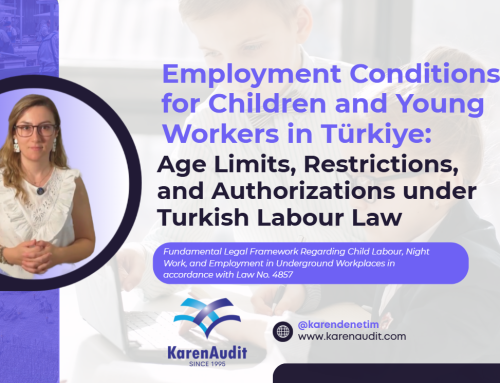April 25, 2024
- In the United States, equity prices fell sharply, bond yields increased, and the value of the dollar surged following news that inflation in March was higher than expected. Many investors were already jittery following higher-than-expected inflation in January and February. Last week’s report puts a nail in the coffin of expectations of a rapid easing of monetary policy this year. Before the inflation report was released, investors were pricing in a 98% probability of a rate cut by July. After the report, that probability dropped to 50%. If, as investors now expect, interest rates remain high for longer, that implies higher bond yields as well.
Let’s look at the data and see why investors are so vexed, and if their viewpoint is warranted. First, the consumer price index for the United States was up 3.5% in March from a year earlier, the highest rate of annual headline inflation since September. Prices were up 0.4% from the previous month, the same as in February and the highest since September. However, when volatile food and energy prices are excluded, core price inflation did not accelerate in March. Specifically, core prices were up 3.8% from a year earlier, the same as in February and the lowest core inflation since May 2021. Still, it appears that core inflation is stalling, having been 4.0% in October. Core prices were up 0.4% from a month earlier, the same as in February.
Now let’s look at some of the details behind the inflation report. First, energy prices are rebounding, which explains the rebound in headline inflation. Energy prices were up 2.1% from a year earlier and up 1.1% from the previous month. This partly reflects the sharp increase in crude oil prices since the start of the year. Also, US electricity prices were up 5.0% from a year earlier.
Some categories saw either very low or even negative inflation in March. Prices of new cars were down 0.1% from a year earlier while prices of used cars were down 2.2%. Prices of apparel were up only 0.4%, the price of food eaten at home was up only 1.2%, and the price of airline fares was down 7.7%. On the other hand, the price of shelter (housing) was up 5.7% from a year earlier, contributing substantially to overall inflation. When shelter is excluded, consumer prices were up 2.3% from a year earlier. The good news is that shelter inflation has been gradually receding since it peaked in March 2023 at 8.2%.
Inflation remains mostly a problem involving the prices of services. Prices of durable goods continued to decline in March, down 2.1% from a year earlier. This included a decline of 6.9% for televisions and a drop of 6.6% for information technology goods. The latter, in turn, included a 9.0% decline for smartphones. Prices of non-durable goods were up a modest 1.7%.
Prices of services, however, were up 5.3% from a year earlier. Even when shelter is excluded, prices of services were up 4.8%. The problem is that services tend to be labor-intensive, the labor market is tight, and wages are rising. Moreover, there is no sign that labor market conditions are easing. Employment grew at a blistering pace in March. Only a spurt of immigration, which boosted labor supply, has prevented even bigger increases in the prices of services.
For the Federal Reserve, the tightness of monetary policy is meant to weaken the labor market, thereby reducing wage pressure. Evidently, this has not yet been accomplished. It is not clear if keeping rates high for longer will accomplish the Fed’s goal. However, the Fed will likely be reluctant to cut rates if it perceives the economy to be overheating. Thus, investor expectations have shifted substantially.
- What the Federal Reserve does, or doesn’t do, not only influences economic and financial conditions in the United States, but also has an impact around the world. As investors change their expectations for Fed policy, the calculations of other central banks and of investors in other countries shift accordingly. If US interest rates remain high longer than previously expected, this puts upward pressure on the value of the dollar. Hence, the Japanese yen fell sharply to 152.9 yen to the US dollar, the lowest level since 1990, after release of the US inflation data. Since the start of the year, the dollar has appreciated significantly not only against the yen, but also against the Canadian dollar, the euro, and other currencies.
Moreover, the depreciation of the yen comes even after the Bank of Japan (BOJ) ended its easy monetary policy. Consequently, the BOJ is now saying that it will consider further tightening to stem the decline in the yen. Specifically, BOJ Governor Ueda, in response to a question about the value of the yen, said “if there is a risk that a virtuous cycle of wages and prices strengthens more than expected and underlying inflation rises above 2%, we need to consider changing monetary policy.”
For other central banks, especially the People’s Bank of China (PBOC), the US inflation report and its implications for Fed policy will likely deter further easing of monetary policy. For example, the PBOC faces a Chinese environment of near-zero inflation and weak economic growth. Yet, with the Fed likely to keep rates high for longer, a Chinese decision to cut rates would put downward pressure on the value of the renminbi, something the PBOC is not likely to do.
On the other hand, the expectation that the Fed will wait to cut rates is due, in part, to the surprising strength of the US economy. If the US economy continues to do well, it will boost demand for products from trading partners, including China, Japan, and Southeast Asia. That, in turn, will mean strong export growth for those countries, thereby contributing to stronger economic growth.
Finally, the expectation that the Federal Reserve will wait longer to ease monetary policy implies that US bond yields will remain high longer. As such, it is reported that large investors are now selling US Treasury bonds and purchasing European sovereign debt. They evidently expect that the European Central Bank (ECB) and the Bank of England (BOE) will start to cut rates sooner than the US Federal Reserve. This implies that European bond yields will decline sooner, thereby boosting the value of those bonds. As such, European bonds are becoming an attractive asset. In fact, the spread between US and German government bonds increased to the highest level since November.
Meanwhile, in the eurozone, the European Central Bank (ECB) leadership has indicated that it will follow a policy not based on what the Fed does or what happens in the United States. An ECB official said, “We are not Switzerland. We are the euro area and can operate independently without worrying about the exchange rate.” Yet, regardless of what drives its policy, the outcome will be influenced by the United States. As the Fed keeps a tight policy longer than previously anticipated, any easing of policy by the ECB will necessarily lead to further depreciation of the euro. That, of course, would be inflationary. Thus, it seems likely that the ECB will keep one eye on US events as it deliberates in the months to come.
- Investor expectations in the United States are shifting once again, driven by a stronger-than-expected US economy and increased fears that the decline in inflation is stalling due to a tight labor market. Based on futures prices, investors are now largely expecting two Federal Reserve rate cuts in 2024, with an only 50% chance of a third rate cut. This is a significant shift from late last year when investors appeared to be confident of a significant and rapid easing of monetary policy in the United States in 2024. Moreover, after investors were more optimistic than Fed officials about the pace of monetary easing last year, they are now more pessimistic, expecting fewer rate cuts than the Fed is currently signaling.
The shift in investor perception is largely related to the unexpected strength of the US economy and persistent core inflation. As of late last year, many people were forecasting a soft landing in 2024, with some even expecting a recession. Now many are suggesting no landing at all. Rather, they expect continued strong growth. This implies that the economy can sustain strength even with interest rates at a relatively elevated level. In other words, we could be returning to the environment that existed in the 1990s when the economy was strong and interest rates were higher than today. Also, inflation was higher.
On the other hand, the Federal Reserve has indicated a strong desire to achieve its 2.0% inflation target, even if it means keeping rates higher for longer. If the Fed is successful in bringing inflation closer to its target, that would imply that interest rates can follow—gradually. But if the labor market remains very tight, thereby fueling accelerated inflation, one can imagine a plausible scenario in which the Fed chooses to increase rates once again. Still, I think this is unlikely.
The counterargument to sustained tight monetary policy is that a high level of immigration combined with strong productivity growth is allowing the economy to grow more rapidly than expected, even without generating inflationary pressures. If this is true, then the Fed can comfortably ease policy without fear of igniting inflation. It is too soon to know if this is true. However, there are indications that inflationary pressures are worsening in the face of strong demand combined with a tight labor market.
Source: Deloitte – Weekly global economic update – Ira Kalish
Legal Notice: The information in this article is intended for information purposes only. It is not intended for professional information purposes specific to a person or an institution. Every institution has different requirements because of its own circumstances even though they bear a resemblance to each other. Consequently, it is your interest to consult on an expert before taking a decision based on information stated in this article and putting into practice. Neither Karen Audit nor related person or institutions are not responsible for any damages or losses that might occur in consequence of the use of the information in this article by private or formal, real or legal person and institutions.






